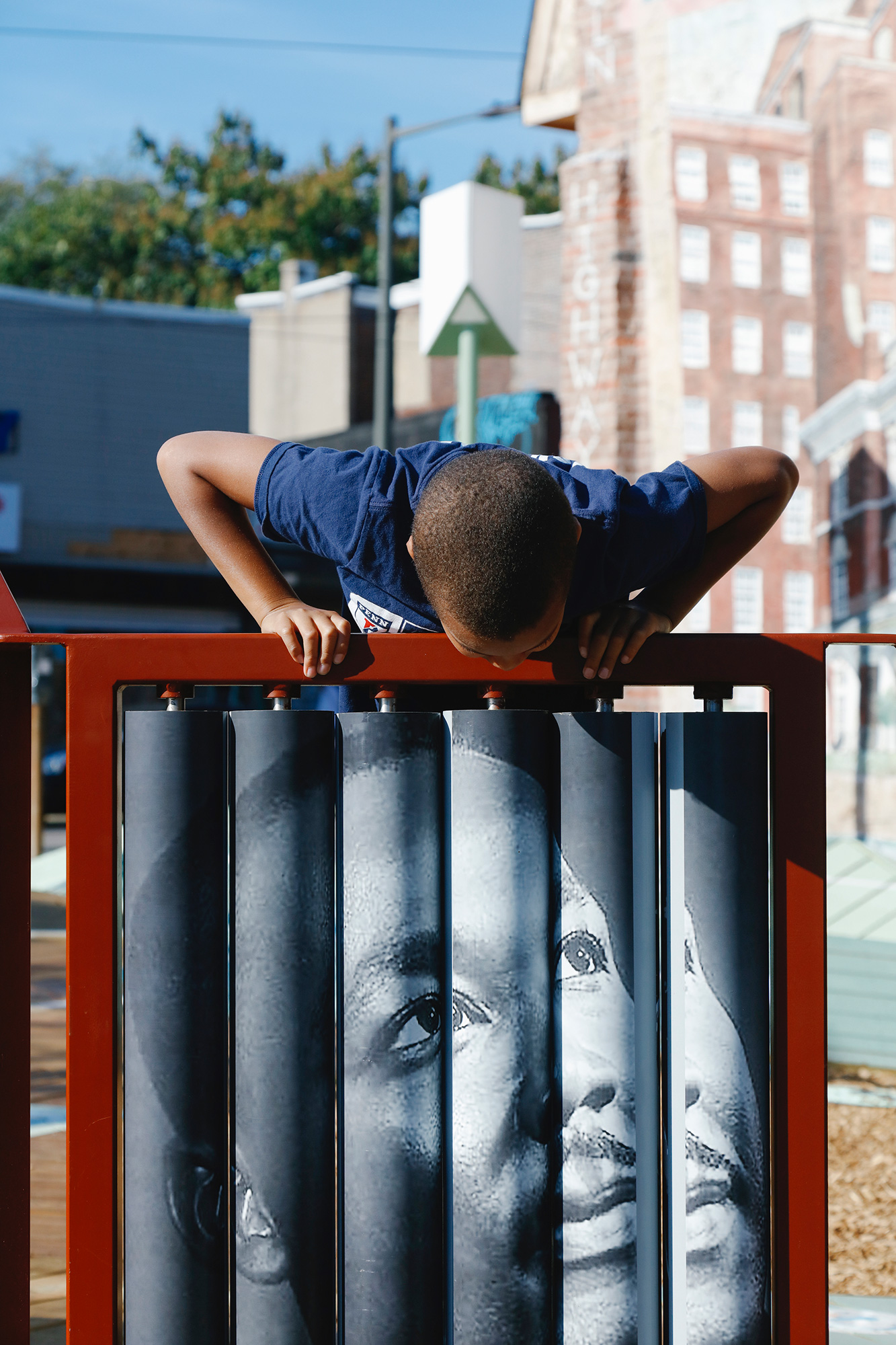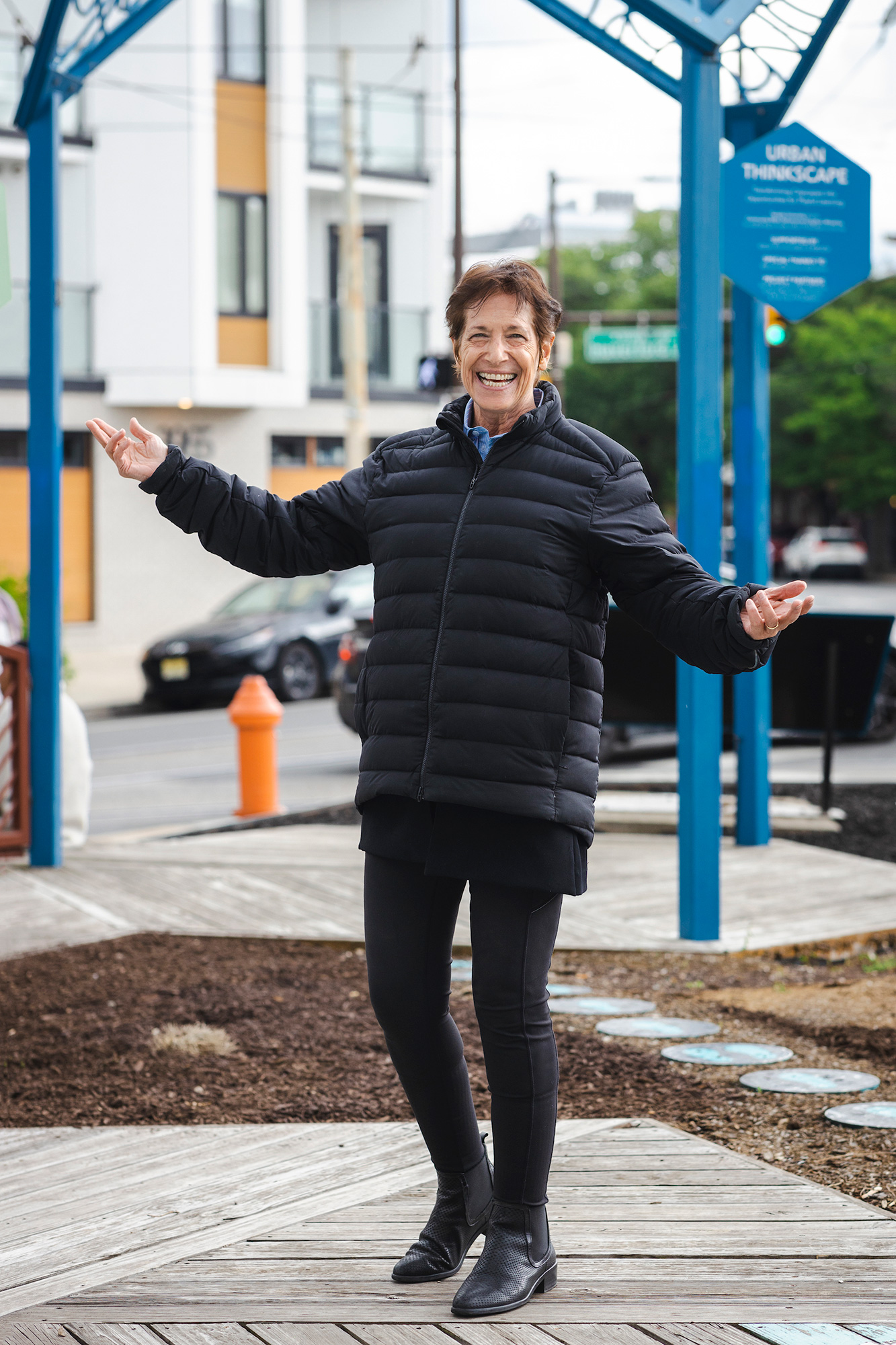“Play is an activity enjoyed for its own sake,” writes Diane Ackerman in her 1999 book Deep Play. “It is our brain’s favorite way of learning and maneuvering…. It’s organic to who and what we are, a process as instinctive as breathing.” Researchers continue to explore the many ways that play drives early learning. A recent white paper published by the LEGO Foundation counted 300 studies across over 40 countries that demonstrated a link between play and skill building in young children.
Early Learning Nation magazine’s new series “Seasons of Play,” will highlight recent developments in playful learning and capture the thinking of the field’s leading figures. First up? Let’s visit Philadelphia’s Playful Learning Landscapes.
Just before touring Philadelphia’s Playful Learning Landscapes, I happened to encounter the polar opposite in the atrium of the city’s tallest office tower. Here, visitors sign up to enter a massive, gleaming-white orb for a seven-minute 360-degree video created by a world-famous director. When my turn came, I had the interior of the orb all to myself, except for the usher. The video ostensibly celebrated the power of innovation, but, to be honest, the whole experience was less than inspiring. Only upon exiting the orb did I discover the qualities that characterize playful learning:

Jumping, climbing and running engage minds as well as bodies, she says. That’s why there’s a climbing wall in the Cecil B. Moore Library in North Philadelphia, one of many collaborations with the nonprofit Studio Ludo. As Meghan Talarowski, the studio’s founder and director, told WHYY, “Risky play is the idea of encouraging kids to use their bodies in different ways that are developmentally appropriate for them.” The Playbrary also features tangram cutout reading nooks; colorful, lightweight tangram blocks; and a magnetized board with words and letters where children can express themselves.
👉 Download PLLAN’s Playbook 2.0
• Inexpensive. The installations I visited on my tour were creative and colorful, but their budgets were modest—a mere fraction of what the orb must have cost. Many are fabricated at the NextFab maker space, where Jon LuBow of LuBow Design LLC and Katelyn Fletcher, Ph.D.—a postdoctoral fellow with the Temple Infant & Child Laboratory—demonstrated a prototype of a pattern game inspired by Dance Dance Revolution as well as a set of story wheels destined for 12 Bright Horizons sites throughout Philadelphia.The story wheels build knowledge of story structure, just as the dance game teaches patterns that feed later STEM skills. “Local artists, designers and fabricators are wonderful to work with,” says Sarah Lytle, Ph.D., executive director of PLLAN. “They bring their creativity to every project and figure out how to turn ideas into reality.” Local is a related quality. Rather than hiring international luminaries, PLLAN works with abundantly talented Philadelphians.
👉 Parkopolis: Human-sized Boardgame

• Low-tech. While NextFab offers some pretty impressive equipment, the overall low-tech vibe rubs off on families. “The parents are playing, too,” notes Hirsh-Pasek. “They actually put their cell phones away.”
In the Belmont neighborhood of West Philadelphia, Urban Thinkscape transforms a bus stop into a zone for family discovery. Installations include a bench with puzzles, hopscotch developed to allow children to practice impulse control, icons on a walking path for story creation and a hidden figures sculpture. Research shows increases in targeted types of caregiver interaction and child language use.
Lytle and team are developing Early Learning Backpacks that families can check out from the library. She’s also inspired by innovative play concepts emerging from Brilliant Detroit.
• Open-ended. The best games don’t come with rules. Children and families invent their own rules. As Fletcher and her coauthors have written, “Critically, adults do not tell a child what to do or direct them towards the ‘right answer’ during guided play, but rather adults encourage the child to explore further and find their own solutions.”

Stories drive playful learning games and activities, but these stories don’t necessarily have beginnings and endings—as anyone can tell you who has tried to follow a story emerging from a young child’s imagination. In her NAEYC post titled Learning Stories, Judi Pack writes, “A story is powerful and meaningful to families and can often communicate more than a number, a score or a checklist of skills.”
Hirsh-Pasek has spoken and written powerfully against the prevailing emphasis on the testing that drains the joy from learning.
👉 Playful Learning Landscapes metrics framework (Brookings Institution)
• Driven by community. Not many community members are likely to walk into a corporate headquarters, but they do go to grocery stores, laundromats and health clinics, and these are the kinds of spaces that PLLAN targets. For example, an interactive mural animates the large waiting room at the Puentes de Salud clinic, which accommodates 10,000 visits per year. The mural vividly depicts weaving, dancing, embroidery and other aspects of the culture and heritage of the patients. Hundreds of community members took part in painting the mural.
The installation also includes a lotería game in four languages selected by community members: English, Spanish, Nahuatl and Q’eqchi’. “The project uplifts our community’s linguistic diversity,” says Orfelina Feliz Payne, the clinic’s executive director.
Aesthetically, the playful installations I saw on my tour were far more engaging than the gleaming white orb in the office tower, but, more importantly, the science of child development is baked into these designs, which is why they are so effective. As Hirsh-Pasek notes, “It’s not just about beautifying. It’s about learning. It’s about community.”

Mark Swartz
Mark Swartz writes about efforts to improve early care and education as well as developments in the U.S. care economy. He lives in Maryland.



